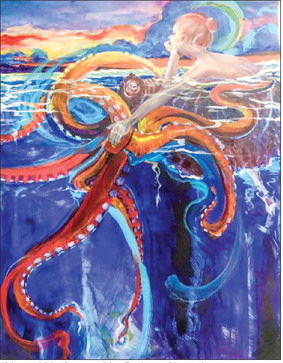Church of Jesus Christ of Latter-day Saints
by Jim Greer
LW contributor
The Jewish celebration of Passover and the Christian observance of Easter are eternally linked. The Passover of the Old Testament and Easter of the New Testament testify of God’s grace. These sacred religious commemorations declare that death has no permanent power and will “pass over” us, giving the grave no victory.
As a protection against the terrible punishment inflicted upon the Egyptians, the Lord instructed Israel to sacrifice a lamb without blemish and “take of the blood, and strike it on the two side posts and on the upper door post of the houses, wherein they shall eat it.”
From that first Passover night, “when your children shall say unto you, ‘What mean ye by this service?’ That ye shall say, ‘It is the sacrifice of the Lord’s Passover, who passed over the houses of the children of Israel in Egypt’” (see Exodus 12).
Since that miraculous night, “the children of Israel...kept the Passover on the 14th day of the month” (Joshua 5:10). Every year since, Passover was observed by obedient Jewish families, including Joseph, Mary and Jesus. The feast of the Passover marked significant milestones during the ministry of Christ. At the first Passover of his ministry, Jesus declared his authority by purifying the temple, driving out the moneychangers and those who sold animals. In the second Passover, he manifested his power with the miracle of the loaves and fishes. Christ then introduced the symbols that would provide more significant meaning in the Upper Room. “I am the bread of life,” he said. “He that cometh to me shall never hunger; and he that believeth on me shall never thirst” (John 6:35). It would be the feast of his last Passover that would give full expression to this ancient celebration. Jesus knew what this last Passover of his mortal ministry would mean to him. To his disciples, he said, “Ye know that after two days is the feast of the Passover, and the Son of Man is betrayed to be crucified” (Matthew 26:1–2).
At that Passover, Jesus sat with his disciples, eating the sacrificial lamb, bread and wine. Then he taught them a new meaning of that ancient blessing from God. The bread and wine replaced the animals and herbs and became emblems of the Lamb of God’s body and blood. These emblems are to be consumed reverently in remembrance of him forever.
With Christ’s suffering in Gethsemane, sacrifice at Calvary and resurrection from a garden tomb, the savior fulfilled the ancient law that foretold of his coming. These new events revealed a higher understanding of the ancient law of sacrifice. The Son of God offered himself as an “infinite and eternal sacrifice.”
The majesty of the atonement and resurrection is not just in the Passover from death, but in the gift of eternal life by way of Christ’s infinite and last sacrifice as expressed by Amulek: “For it is expedient that there should be a great and last sacrifice; yea, not a sacrifice of man, neither of beast, neither of any manner of fowl; for it shall not be a human sacrifice; but it must be an infinite and eternal sacrifice” (Alma 34:10).
That infinite and eternal sacrifice, made on our behalf by our elder brother Jesus Christ, was the fulfillment of the father’s work and glory, “to bring to pass the immortality and eternal life of man” (Moses 1:39). Immortality, living again as a resurrected being through the resurrection of Christ, and eternal life-living in the presence of God in a family unit.



